How does urbanisation impact the water cycle?
The natural water cycle is impacted by buildings and sealed surfaces.
As a result, natural water flows are altered and stormwater is created.
Stormwater is rain that has collected on roofs, roads, footpaths and other sealed surfaces. It flows directly into our waterways via the stormwater drainage network.
In urban areas, water cycle problems include:
Pollution
When water comes in contact with urban surfaces such as roofs, roads and footpaths, it becomes contaminated with oil, metals, litter and other pollutants. This is what we call stormwater.
Stormwater drains do not usually have any treatment systems, so pollutants are carried directly into our waterways, bays and oceans.
Waterway flushing
When it rains, the volume of stormwater entering the waterways in urban areas increases. Water that would usually soak into the ground floods into the stormwater drainage network, where it is transported directly to our waterways.
High volumes of stormwater impact our waterways by:
- damaging the habitat for aquatic animals, such as fish and invertebrates
- disturbing the breeding cycles of aquatic animals
- eroding stream banks
- increasing turbidity and pollution levels
- altering natural flood cycles.
Flooding
During heavy rainfall events, large volumes of stormwater collect on sealed surfaces and flow into the stormwater drainage network. Flooding can occur when the volume of stormwater exceeds the capacity of the stormwater drains. This can cause flooding in areas not necessarily close to waterways.
Decreased soil moisture
Most urban surfaces are sealed, or impermeable. They prevent rainwater from soaking into the soil as it does in the natural water cycle.
Low soil moisture in urban areas can impede healthy growth of plants, so irrigation is required to keep trees, plants and grass healthy. In Melbourne, many of the trees have developed shallow root systems as a result of years of surface irrigation, making them unstable.
Integrated water cycle management (IWCM)
Integrated water cycle management is also known as whole of water cycle management or sustainable water management.
The City of Melbourne practises integrated water cycle management. This is the coordinated management of all components of the water cycle including water consumption, rainwater, stormwater, wastewater and groundwater, to secure a range of benefits for the wider catchment.
Undertaking this integrated management in a city or urban water catchment presents very different challenges than managing catchments in more natural, less built environments.
Unsealed or permeable soil surfaces in a natural landscape allow water to infiltrate into soil slowly and be used by vegetation. In built urban environments such as Melbourne, there are large areas of sealed soil such as under roads and buildings where water is unable to penetrate, and quickly runs off into drains. During this process, water collects all forms of urban pollutants, including sediments, oil, nutrients (including nitrogen), metals, plastics and other rubbish, and then carries them into our rivers.
Urban soils also do not act the same as those in a natural ecosystem. Due to being sealed or covered over, urban soils can be compacted and lacking in nutrients and soil organisms. This prohibits soils from being able to capture and hold water, and also stops groundwater infiltration. Low soil water holding capacity and sealed surfaces can contribute to a loss of biodiversity and an increase in the urban heat island effect.
This all accumulates to create a significant change in natural hydrological cycle. The aim of water management within an urban context is to restore the natural water cycle rhythm, slow water down and allow for groundwater infiltration and regeneration. The aim is also to allow evapotranspiration and subsequently, urban cooling to occur.
Water sensitive urban design is a key component of integrated water cycle management.
Find out more
Flooding and defences
Learn how the City of Melbourne mitigates the three major kinds of flooding.
The impact of Urbanisation on the water cycle
Move your mouse over the picture to learn more about how urban development impacts the natural water cycle.
- Water sensitive urban design
- Flooding and defences








